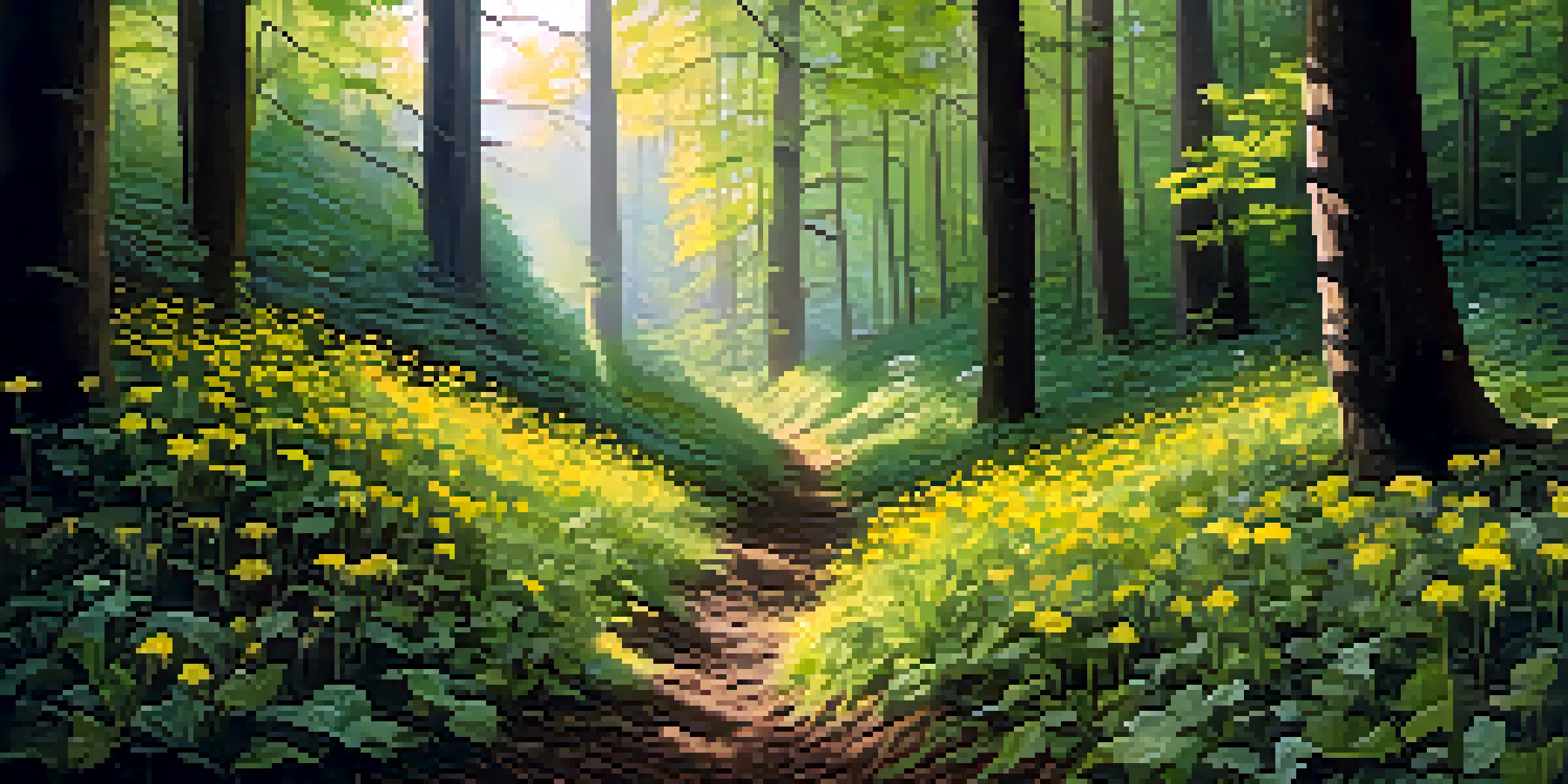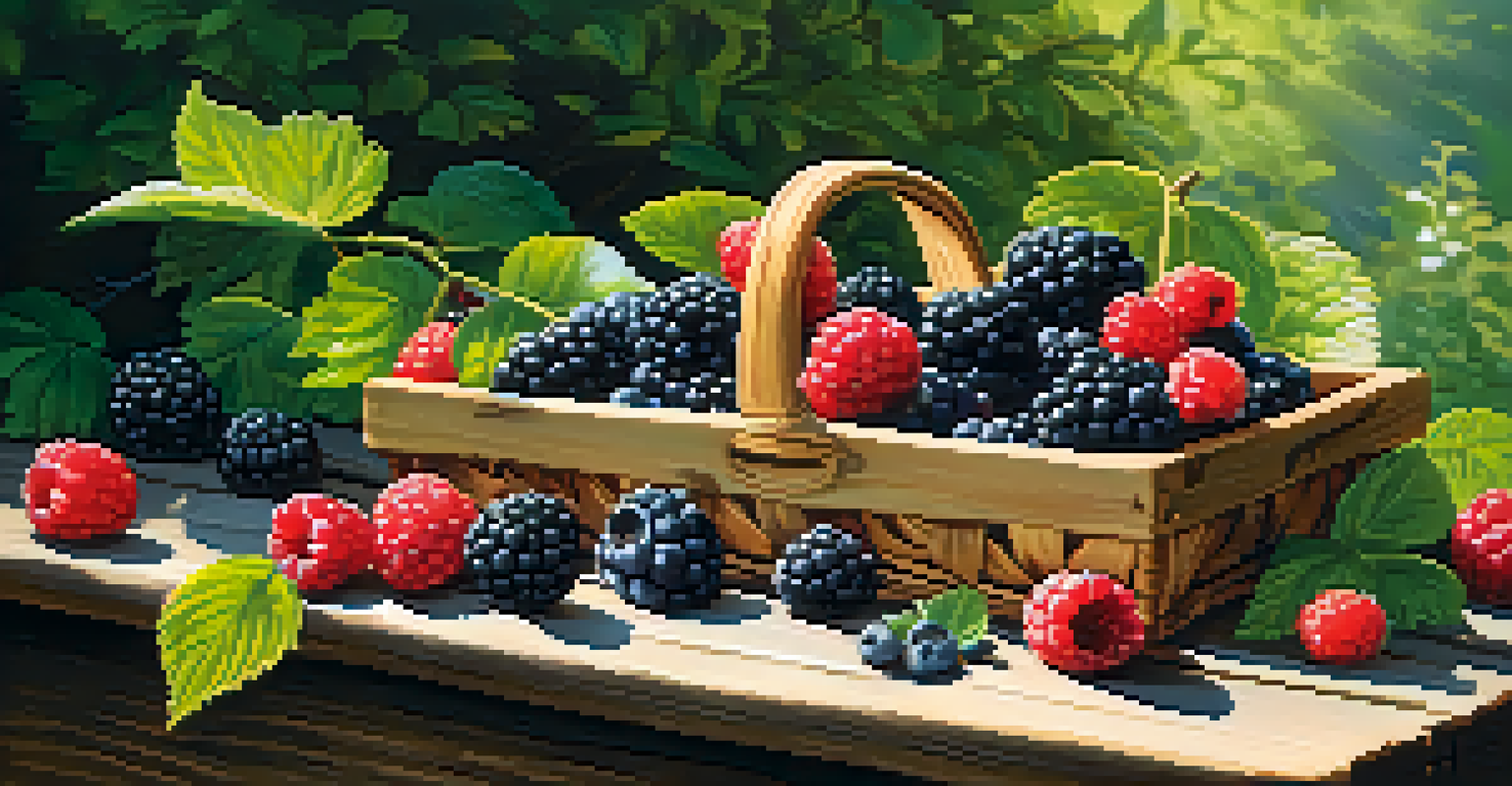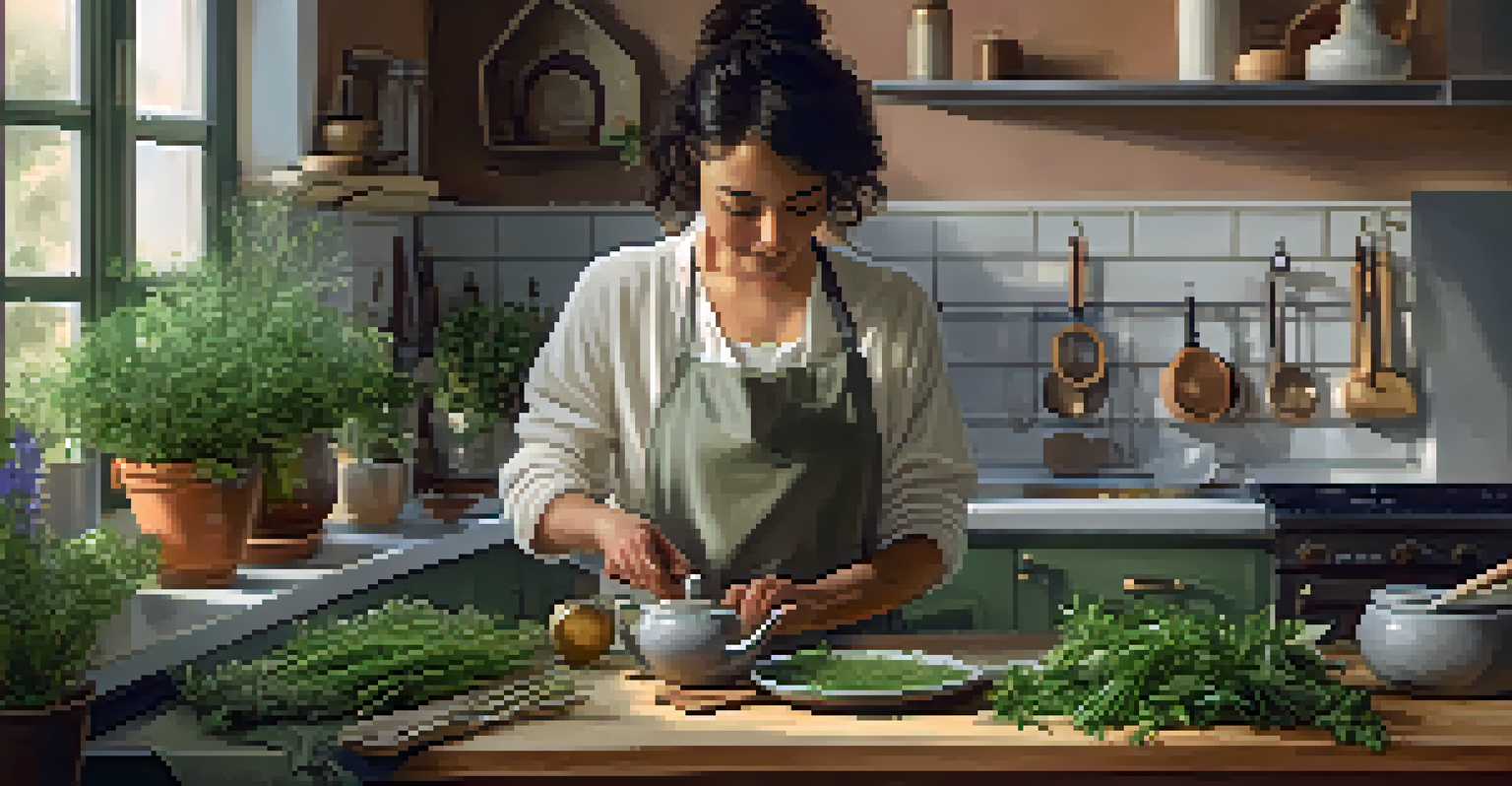Tools and Techniques for Effective Plant Foraging

Understanding the Basics of Plant Foraging
Plant foraging is the practice of searching for and harvesting wild edible plants. It's an age-old tradition that connects us with nature and offers a sustainable way to source food. By learning the basics, you can appreciate the diversity of plants around you and make informed choices about what to forage.
In every walk with nature one receives far more than he seeks.
Before you venture out, it's crucial to understand the rules of foraging, including local regulations and ethical practices. For instance, always ask for permission if you're foraging on private land and avoid over-harvesting to ensure plant populations remain healthy. This respect for nature not only benefits the ecosystem but also enhances your experience.
As you embark on your foraging journey, familiarize yourself with common edible plants found in your area. Resources like field guides or mobile apps can help you identify plants accurately. Remember, safety first! Always double-check your findings to avoid toxic look-alikes.
Essential Tools for Plant Foraging Adventures
Having the right tools can make your foraging experience more enjoyable and efficient. Start with a sturdy basket or bag to collect your finds; this helps prevent damage to delicate plants. A pair of gardening gloves can protect your hands from thorns or irritants while you forage.

A good field guide or foraging app is another essential tool. These resources provide valuable information on plant identification, edibility, and potential look-alikes. You might also consider carrying a small notebook to jot down your observations, ensuring you remember the locations and characteristics of plants you encounter.
Basics of Plant Foraging
Plant foraging connects us with nature while offering a sustainable way to source food by learning to identify and harvest wild edible plants.
Lastly, a multi-tool or knife can be invaluable when harvesting plants. This allows you to cut stems cleanly and safely, making the process smoother. Remember to clean your tools after each use to maintain hygiene and prevent cross-contamination between different plants.
Techniques for Identifying Edible Plants
Identifying edible plants requires keen observation and a bit of practice. Start by learning to recognize key characteristics such as leaf shape, flower color, and growth patterns. Many plants have distinct features that can help with identification, so take your time to observe.
The best time to plant a tree was twenty years ago. The second best time is now.
Another effective technique is to focus on the habitat where plants grow. Certain edibles thrive in specific environments; for example, wild garlic often flourishes in damp, wooded areas. Understanding these relationships can help you locate plants more efficiently during your foraging trips.
Don't hesitate to join local foraging groups or workshops to enhance your skills. Learning from experienced foragers can provide invaluable insights and boost your confidence. Plus, it’s a great way to meet others who share your passion for exploring nature's bounty.
Safety Precautions While Foraging
Safety should always be your top priority when foraging. Educate yourself about poisonous plants in your area to avoid dangerous encounters. Familiarize yourself with resources that list toxic plants, and always err on the side of caution by double-checking any unfamiliar finds.
It's also advisable to forage in areas that are free from pesticides or pollutants. Urban areas may expose you to harmful chemicals, so stick to wild areas or designated foraging spots. If you're unsure about a location, do some research or ask local experts.
Essential Foraging Tools
Having the right tools, such as a sturdy basket and a reliable field guide, enhances your foraging experience and ensures safe harvesting.
Lastly, consider foraging with a buddy. Not only is it more fun, but having a partner can also be a safety net in case of emergencies. If you’re unsure about a plant’s edibility or you encounter a problem, having someone there to assist can make all the difference.
The Best Seasons for Foraging Specific Plants
Timing is everything when it comes to foraging, as different plants have specific seasons when they are at their peak. For example, spring is a wonderful time for tender greens like dandelion and nettles, while summer is ideal for berries like blackberries and blueberries. Understanding the seasonal cycles of plants can help you plan successful foraging trips.
In the fall, many nuts and mushrooms become abundant, offering delicious options for foragers. Autumn is also when many herbs reach their full flavor potential, making it a great time to gather things like wild thyme and sage. Keeping a seasonal calendar can help you track the best times to forage various plants.
Winter foraging may seem challenging, but it's not impossible. Some hardy plants, like certain roots and evergreen greens, can be gathered during the colder months. Plus, winter is the perfect time to prepare for the coming spring by scouting locations and marking potential foraging spots.
Ethical Foraging Practices to Follow
Ethical foraging is about respecting nature and ensuring that you leave enough for others and for the plants to thrive. One key principle is the 'One in Ten' rule, which suggests you only harvest a small percentage of what you find—aim for no more than 10%. This practice helps maintain healthy plant populations and allows for regeneration.
Another important aspect of ethical foraging is to avoid trampling on delicate ecosystems. Stick to established paths when possible, and try to minimize your impact on the environment. Being mindful of your surroundings not only benefits nature but also enhances your own experience.
Ethical Foraging Practices
Respecting nature through ethical foraging practices, like the 'One in Ten' rule, helps maintain plant populations and protects ecosystems.
Lastly, always educate others about responsible foraging practices. If you’re part of a foraging community, share your knowledge and encourage new foragers to respect the land. By fostering a culture of ethical foraging, we can collectively protect our natural resources for future generations.
Cooking and Preserving Your Foraged Finds
Once you've successfully foraged, it's time to enjoy your bounty! Cooking with foraged plants can be an exciting culinary adventure, allowing you to experiment with unique flavors. From wild salads to herbal teas, your fresh finds can elevate your meals and impress your friends and family.
Preserving your foraged plants is another rewarding aspect of foraging. Techniques like drying, pickling, or making syrups can help you enjoy your harvest long after the season has ended. Plus, it’s a great way to create homemade gifts that showcase your foraging skills.

Don't forget to document your culinary experiments! Keeping a journal of recipes and methods can help you refine your skills and inspire future foraging adventures. Sharing your creations on social media or with friends can also foster a sense of community among fellow foragers.